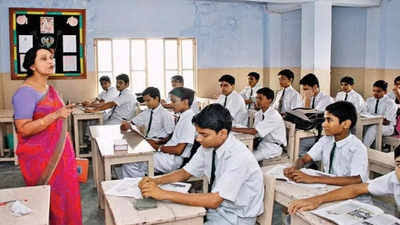Why Maharashtra is Shifting to the CBSE Model for School Education

CISCE Revises Class 11 and 12 Syllabus for Key Subjects, Issues Notification to Schools
This move is part of Maharashtra’s broader initiative to adopt the CBSE education model, which follows the NCERT framework.
Starting in the upcoming academic year in June, Class 1 students in Maharashtra State Board schools will receive new textbooks based on the National Council for Educational Research and Training (NCERT) curriculum, which is widely used in CBSE-affiliated schools.
There were discussions about whether Maharashtra State Board schools would switch to the CBSE academic calendar, which starts in April. However, given Maharashtra’s climate and long-established practices, the state has decided to keep the traditional academic year starting in June.
However, the decision has sparked confusion among schools, teachers, and parents, with some raising concerns that this shift could undermine the Maharashtra State Board, which has long been integral to the state’s educational identity. Despite the concerns, the state government remains committed to its stance, believing that the CBSE model and NCERT curriculum will enhance the quality of school education. Here’s everything you need to know about Maharashtra’s plan to adopt the CBSE model.
What is the CBSE Model?
The CBSE model is the education system used by CBSE-affiliated schools, based on a curriculum developed by the NCERT. Maharashtra plans to implement this same curriculum across its state schools.
For subjects like mathematics and science, which are universal in nature, NCERT textbooks will be introduced in state board schools. For subjects such as languages and social sciences, where local context is important, the Maharashtra State Council for Educational Research and Training (SCERT) will create the syllabus. This new model will be rolled out in phases.
The adoption of the CBSE model will be implemented gradually across state schools:
- In 2025-26, the change will begin with Class 1.
- In 2026, revisions will apply to classes 2, 3, 4, and 6.
- In 2027, classes 5, 7, 9, and 11 will follow suit.
- By 2028, the final phase will cover classes 8, 10, and 12.
Purpose Behind the Change
The primary goal behind adopting the CBSE model is to improve the quality of education and ensure that students are better prepared for competitive exams. These exams are crucial for securing spots in top professional courses after Class 12. By aligning with the NCERT curriculum, students will receive a more standardized and rigorous education that is recognized across the country, thus opening doors to broader opportunities.












